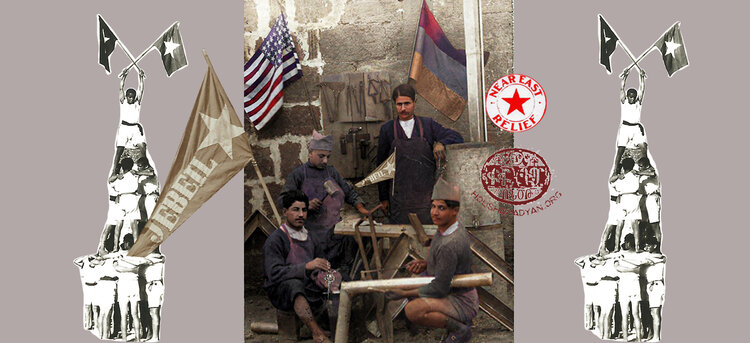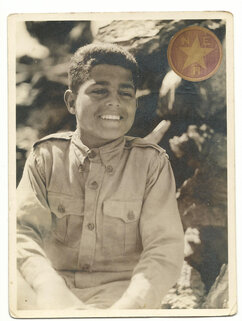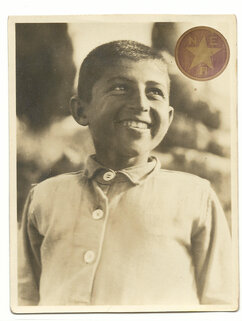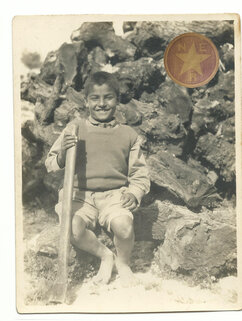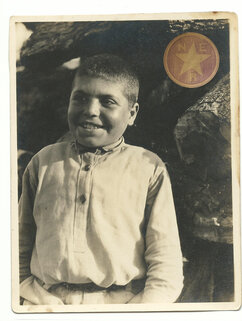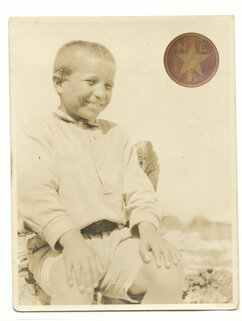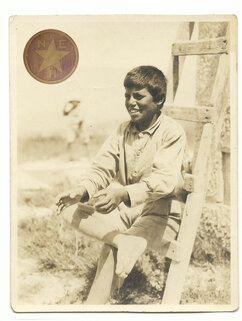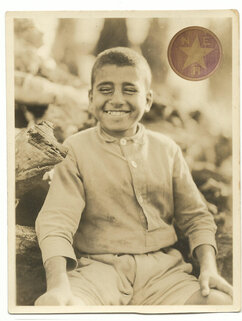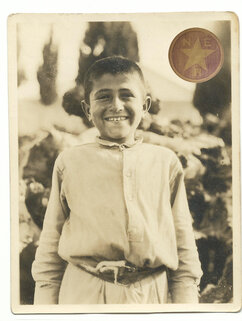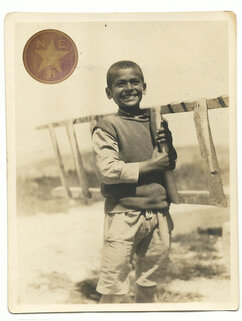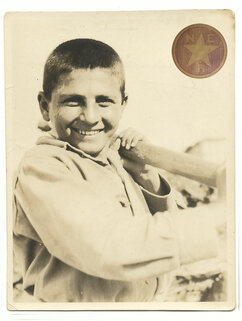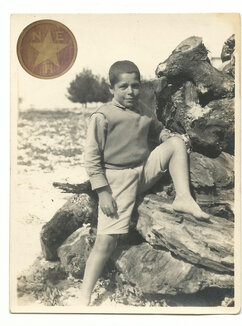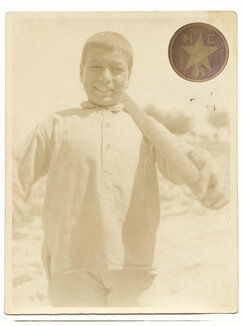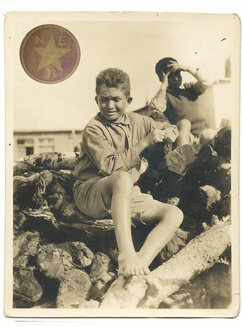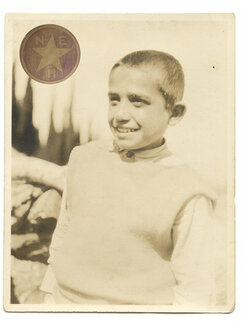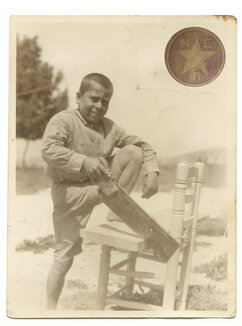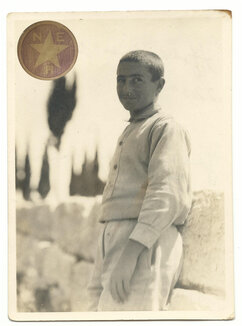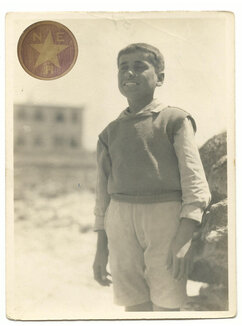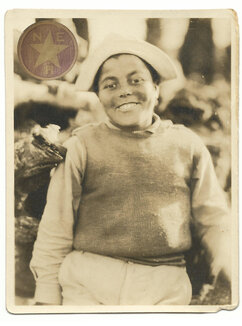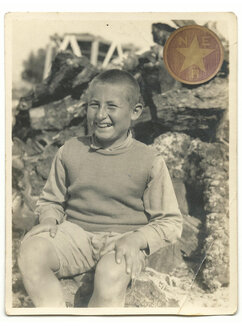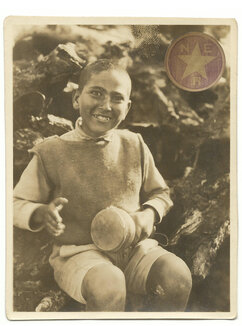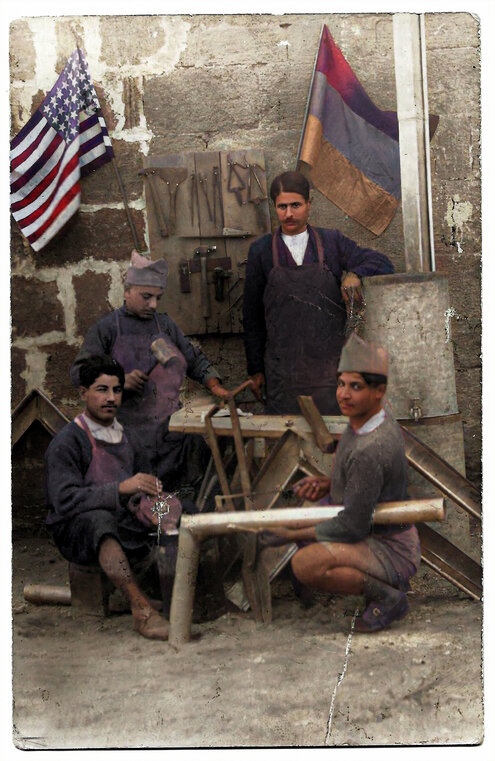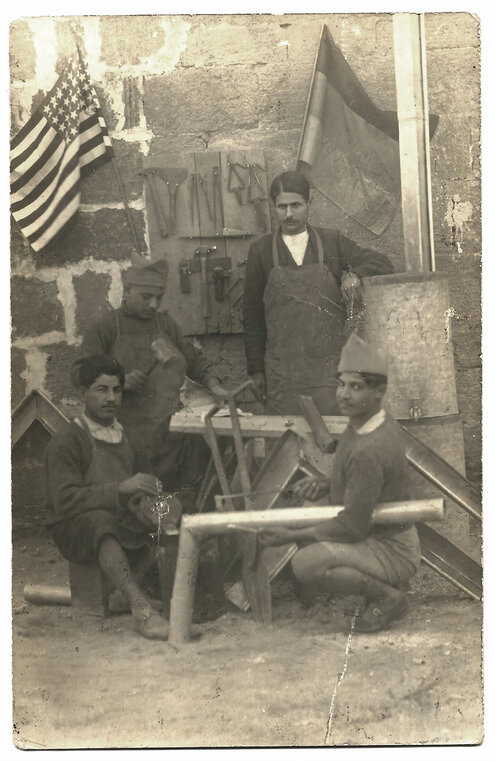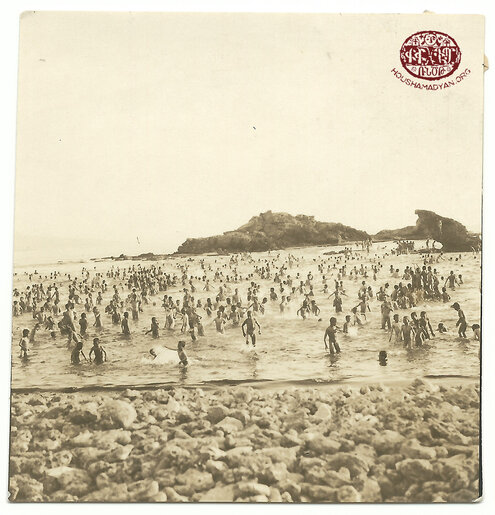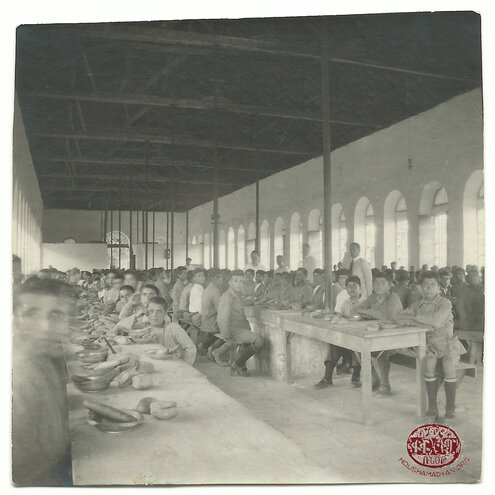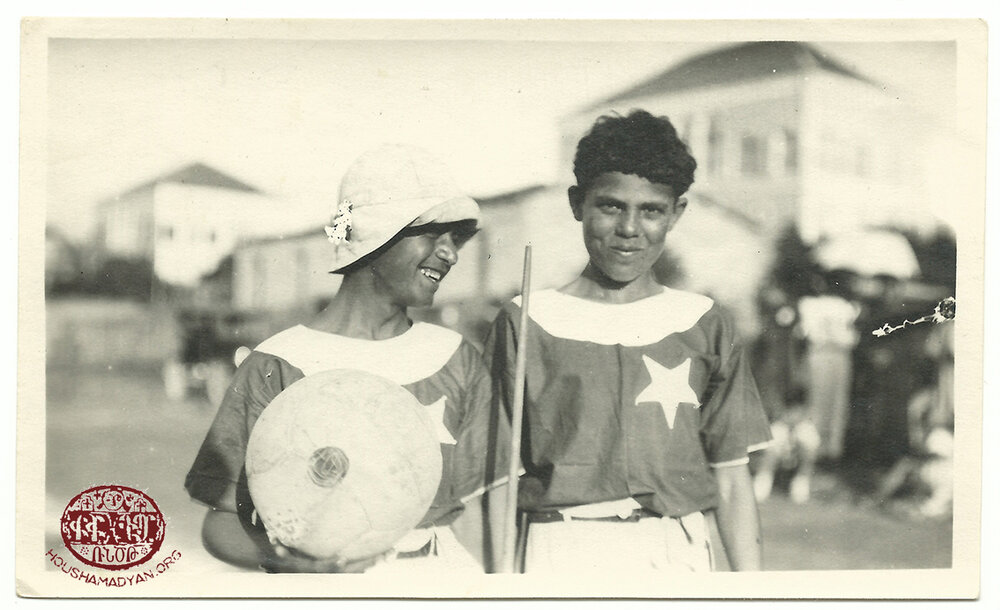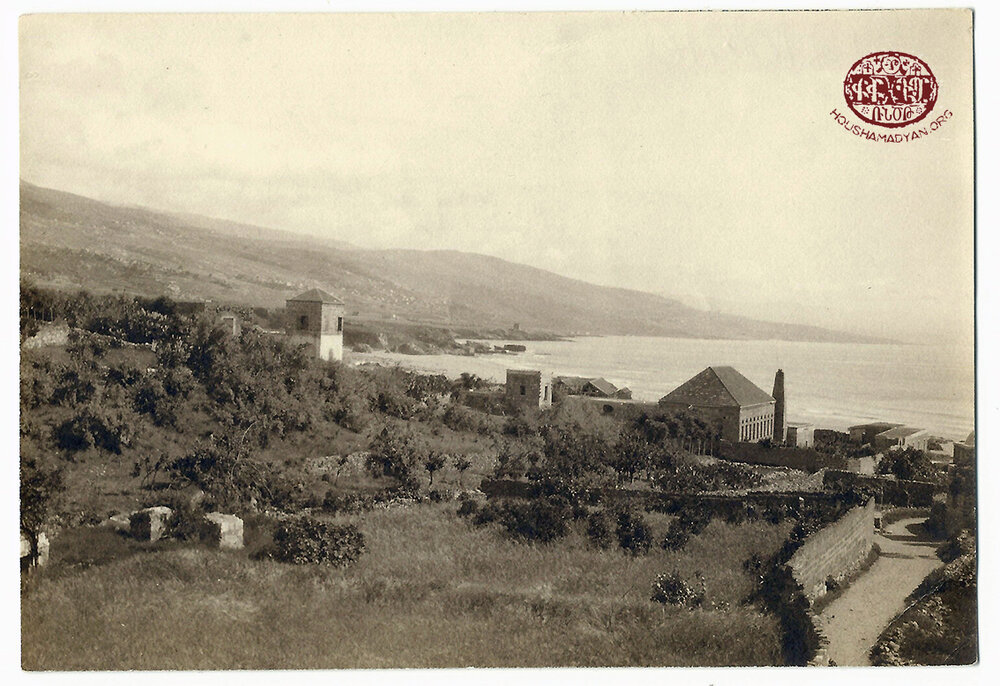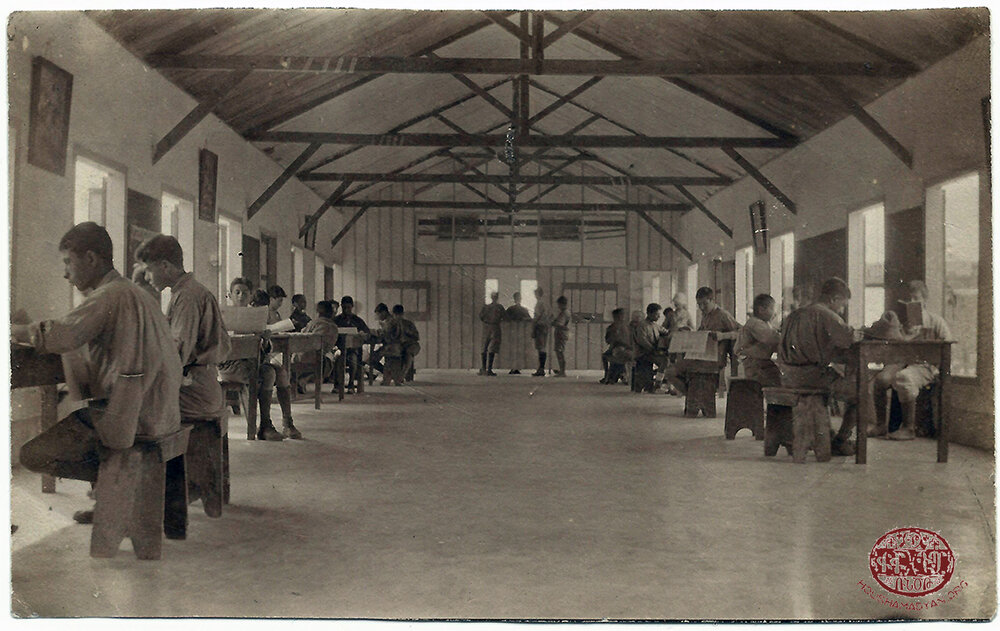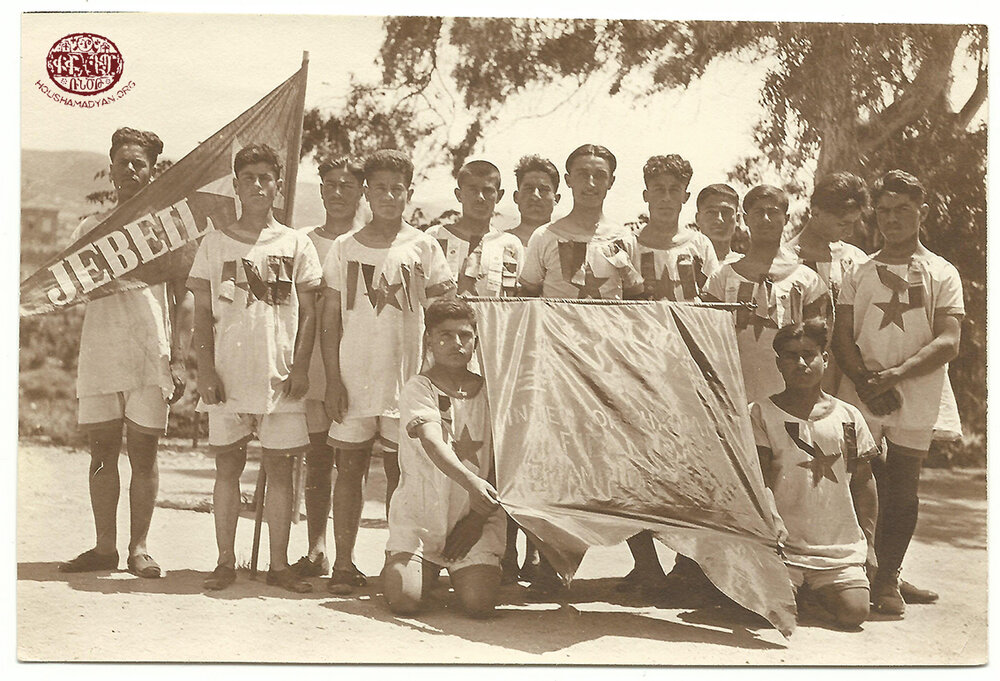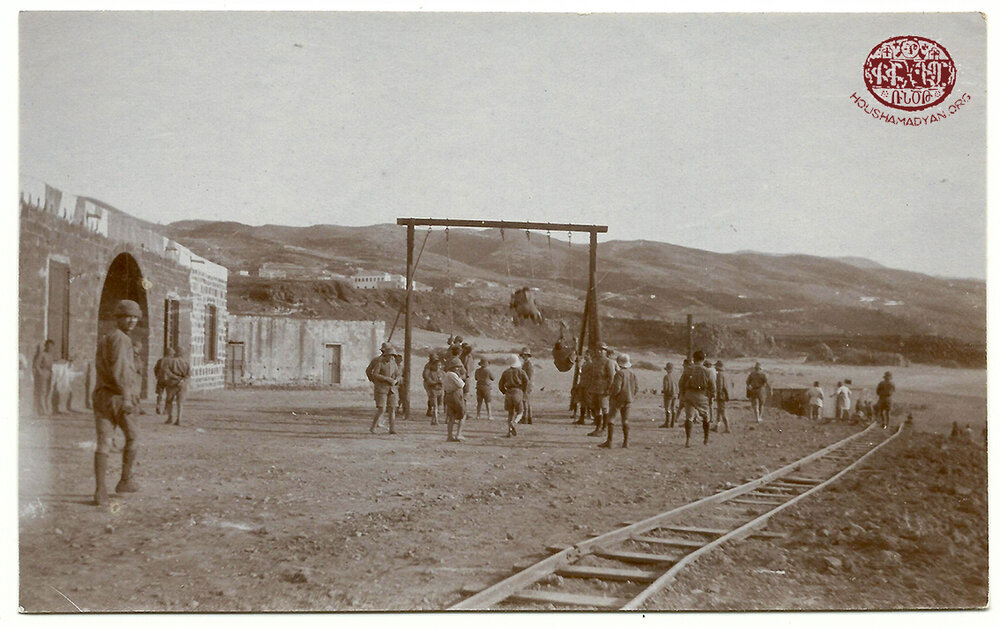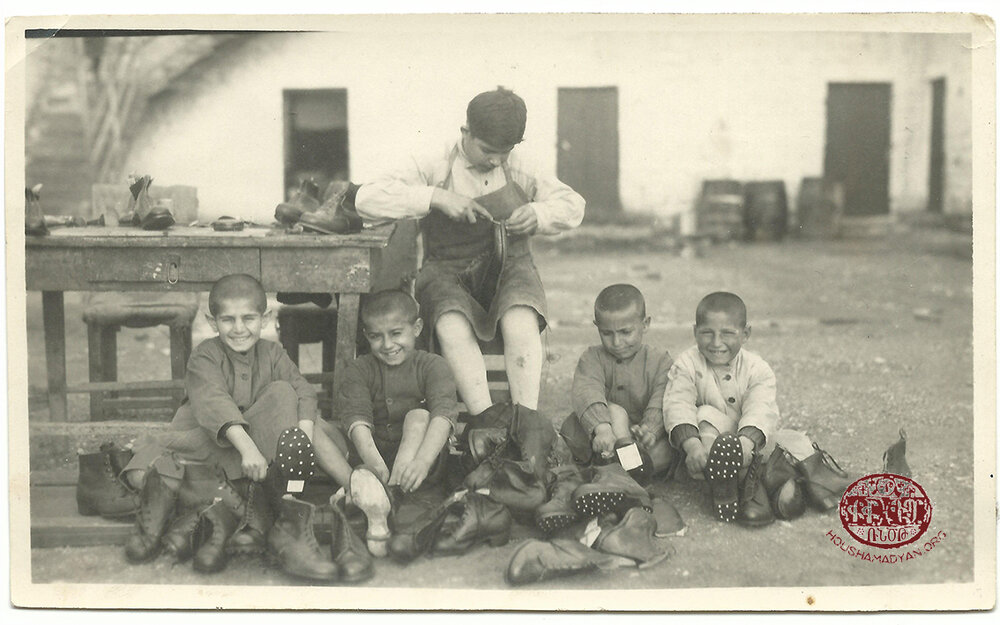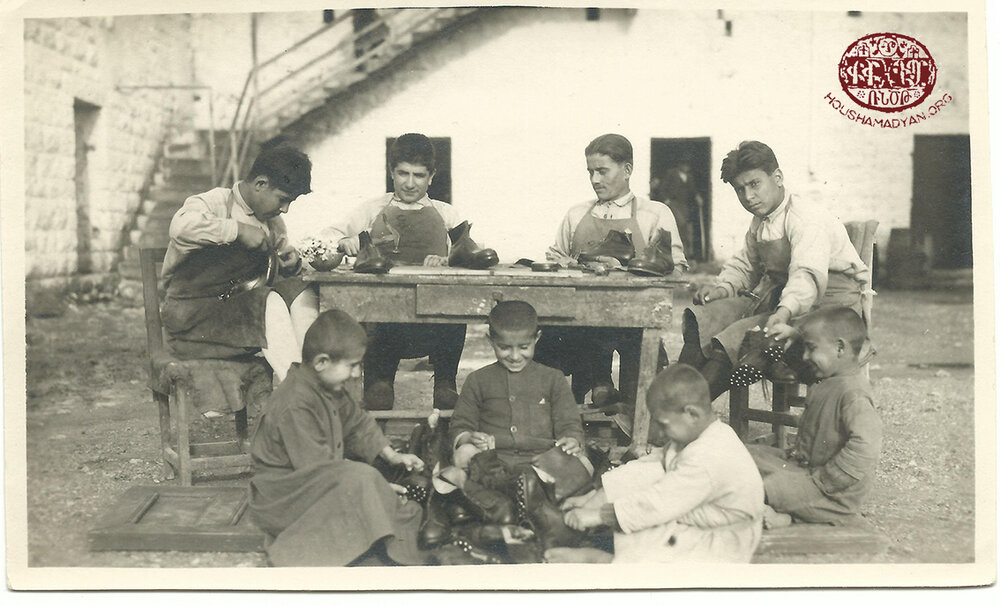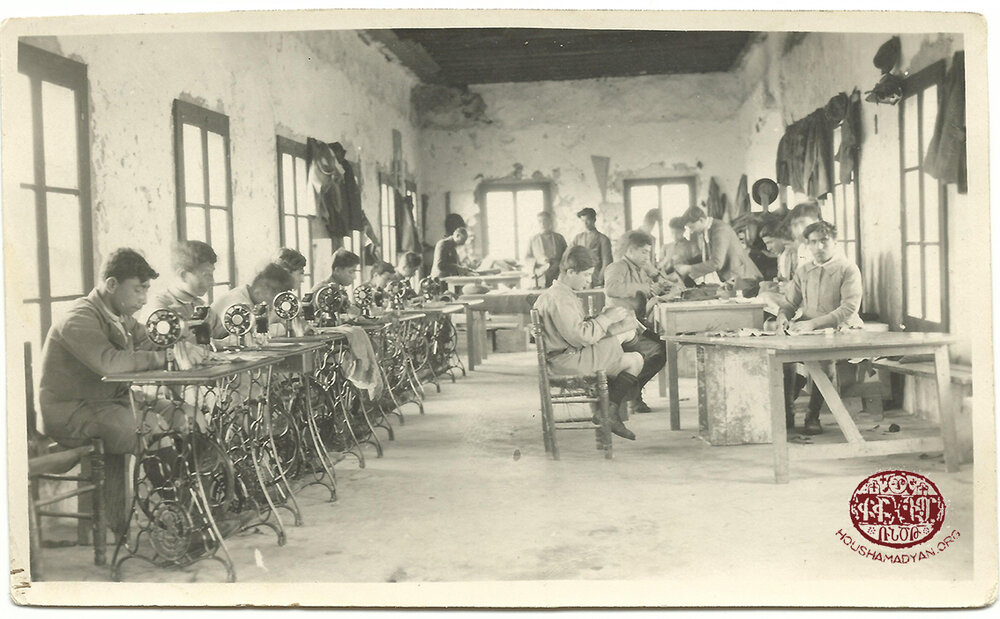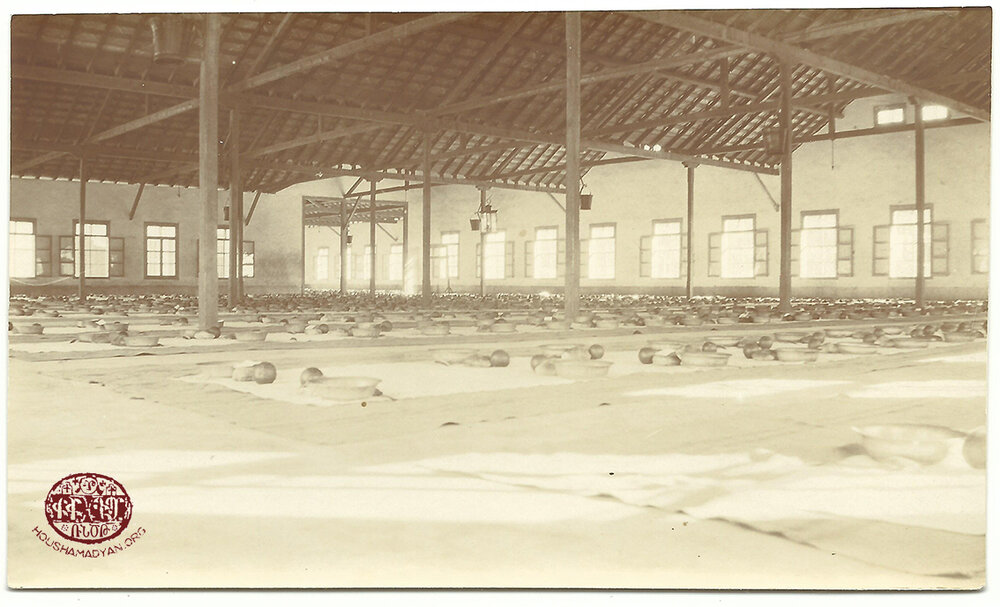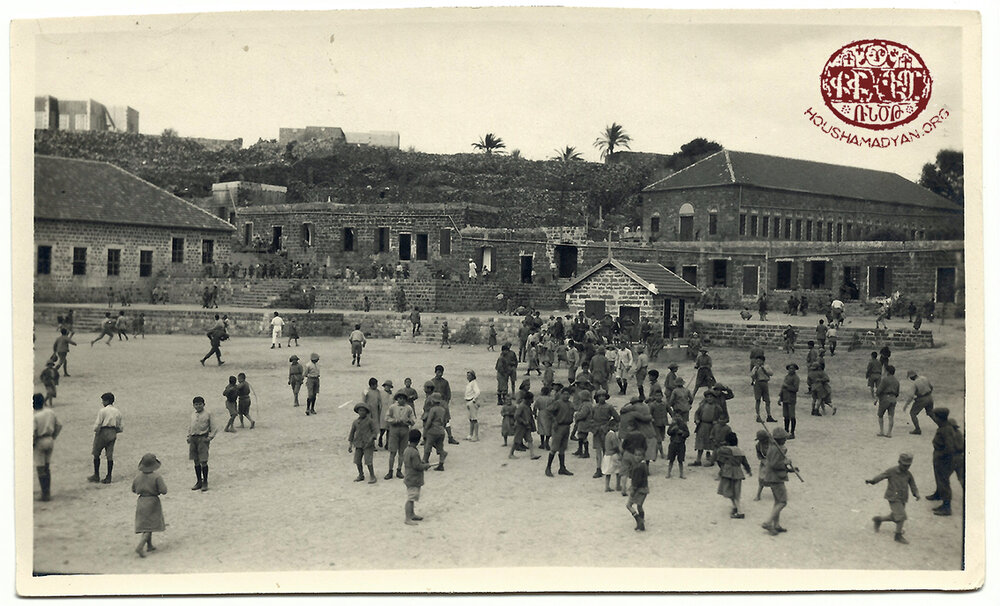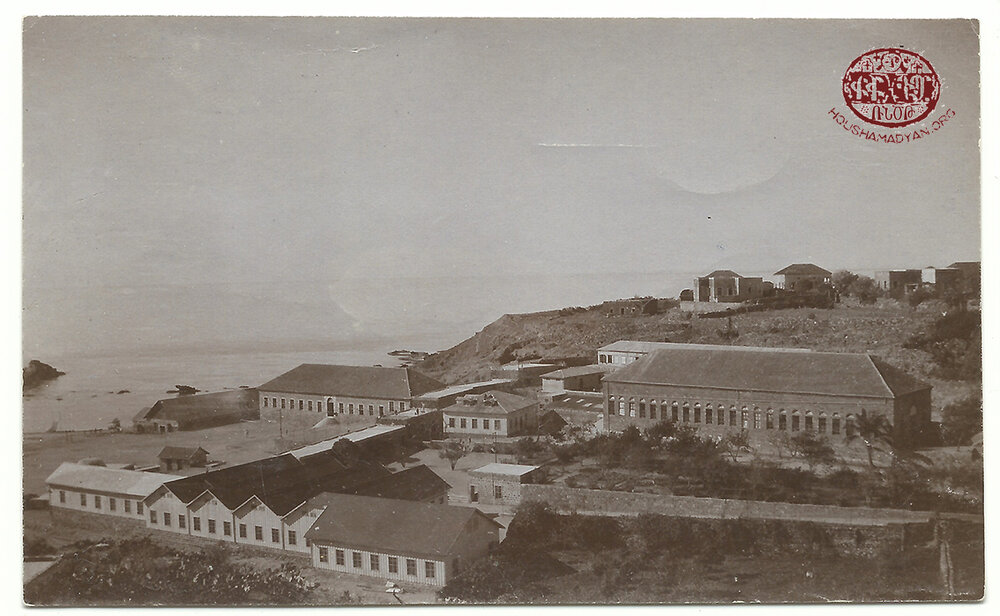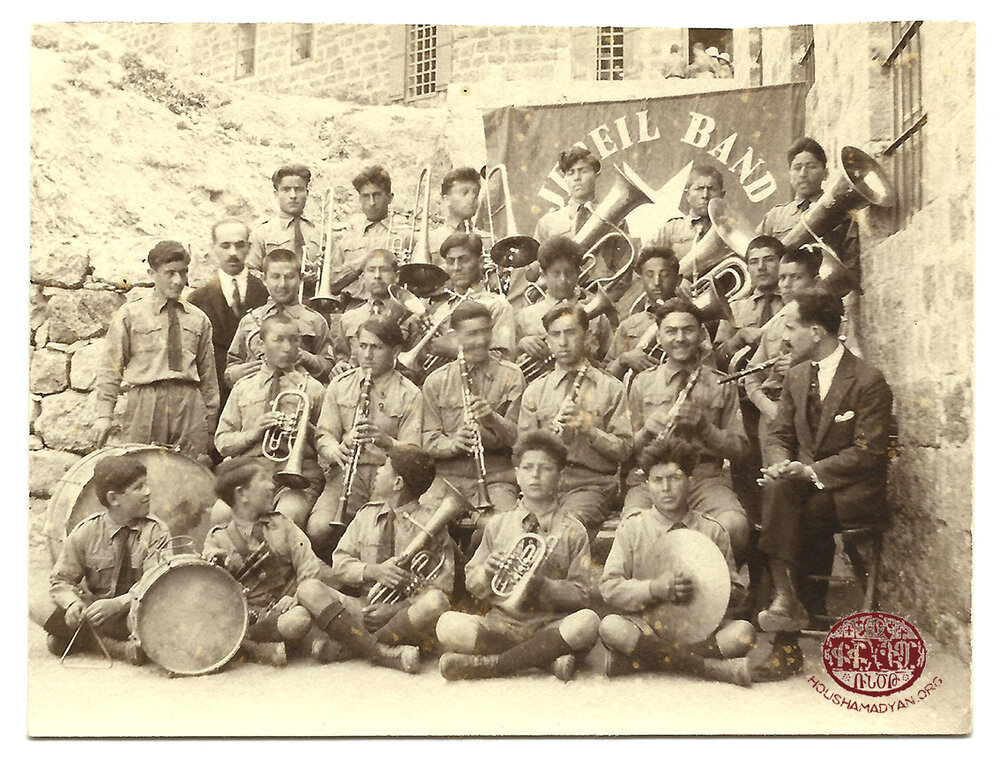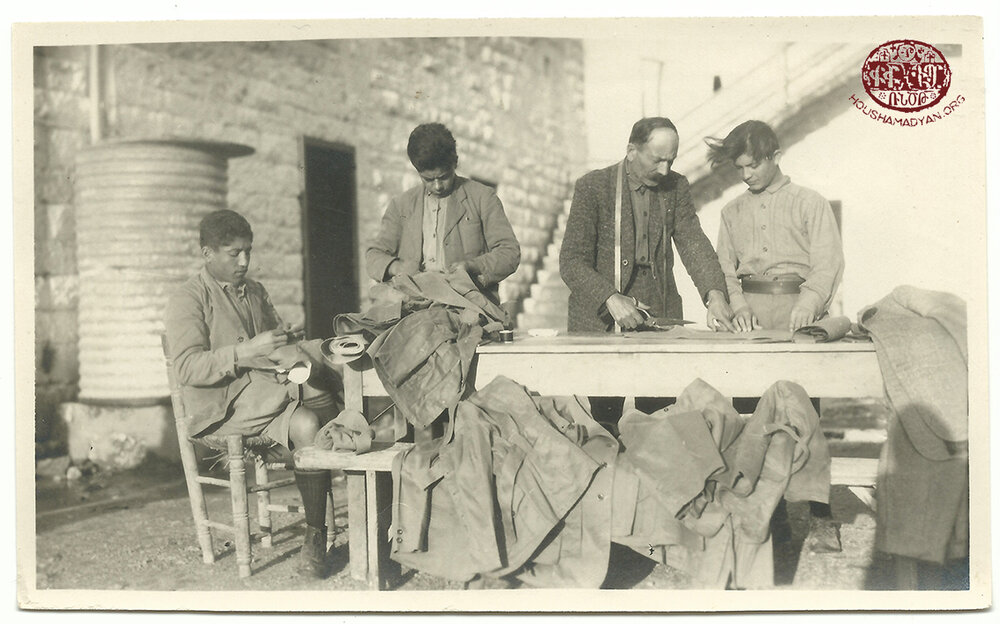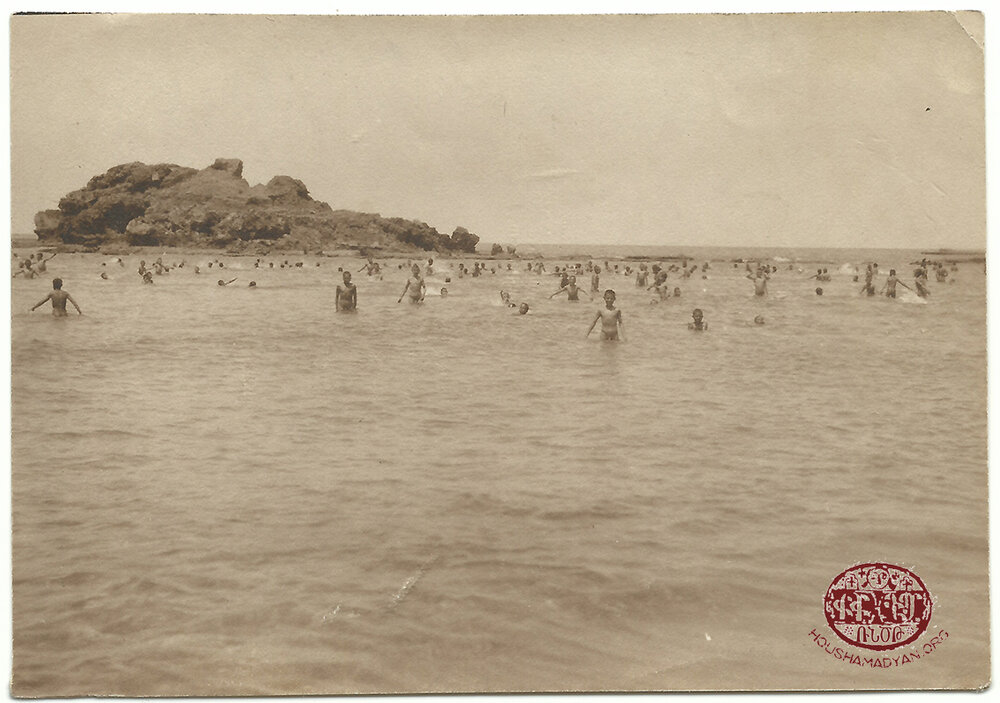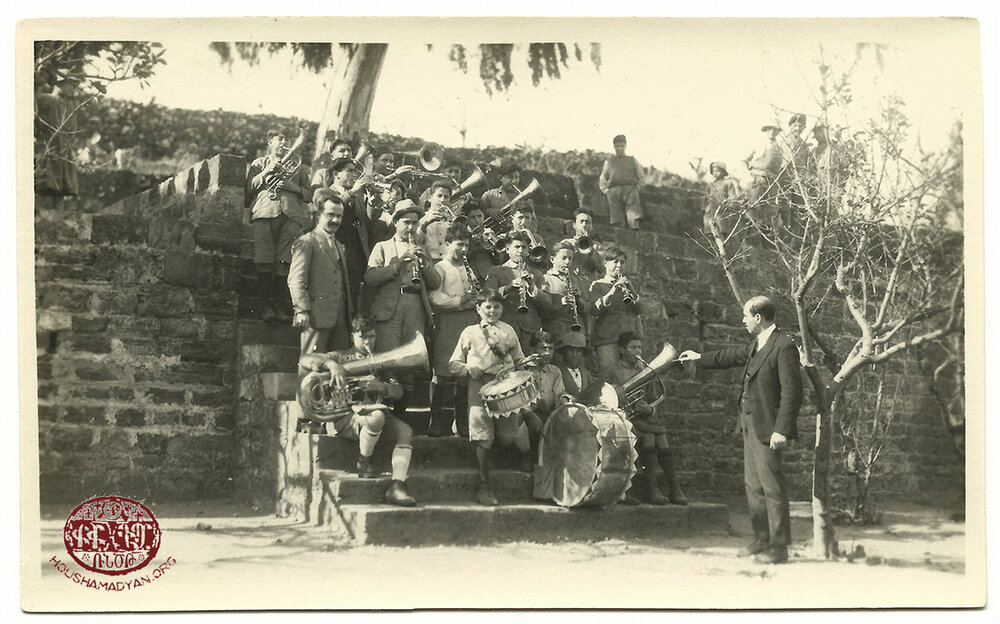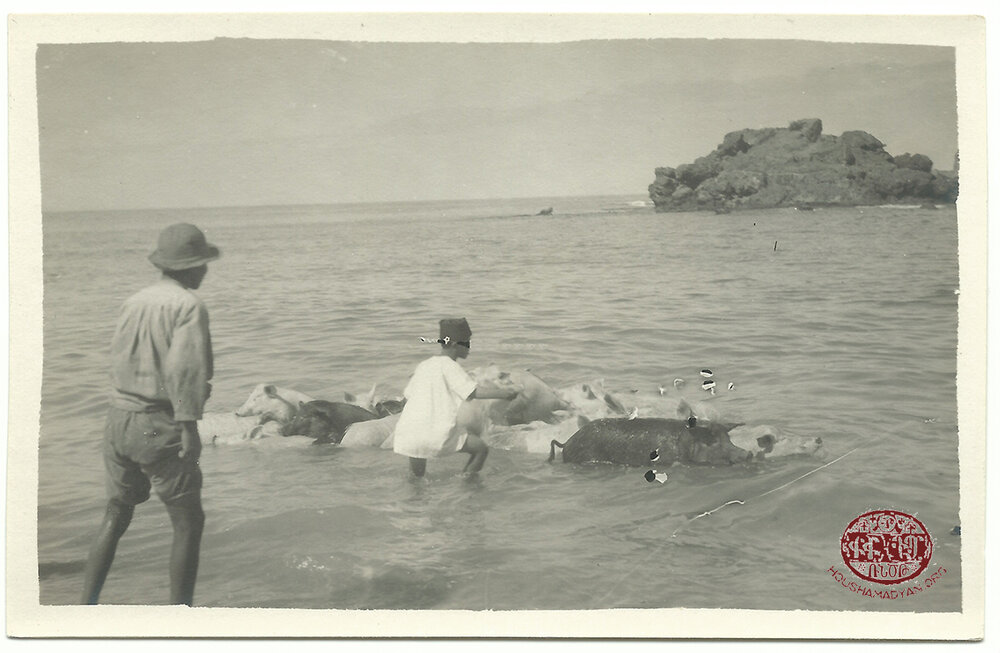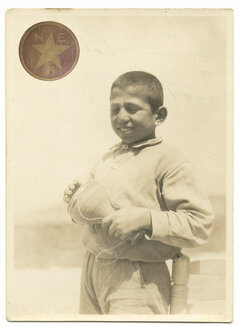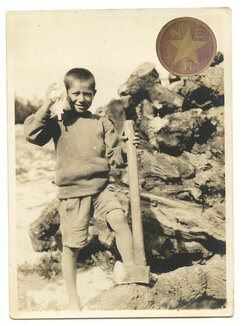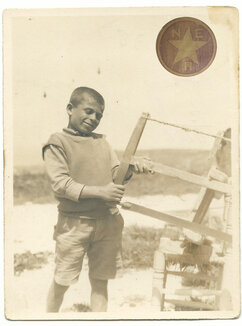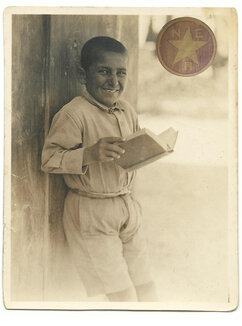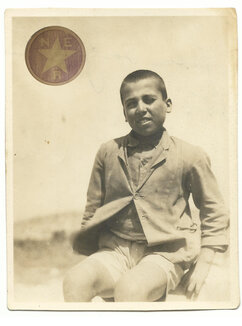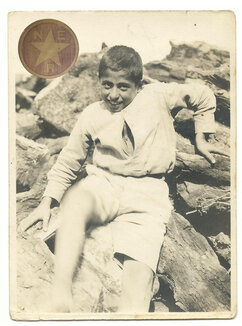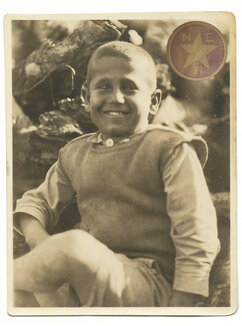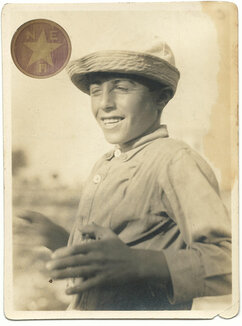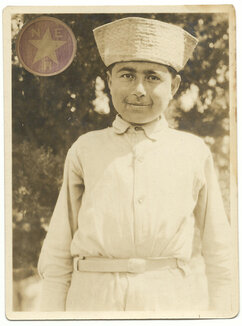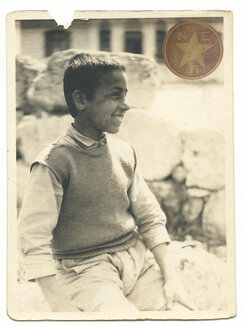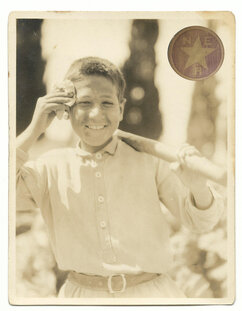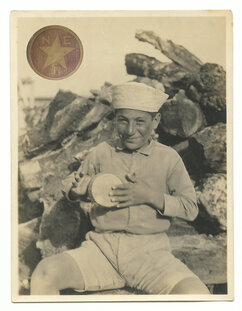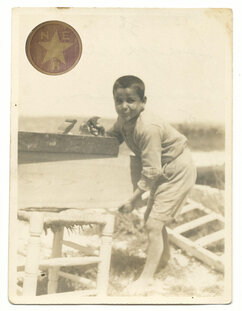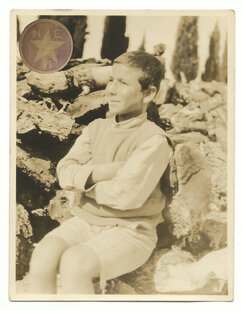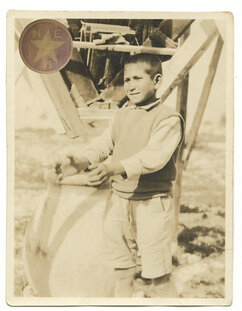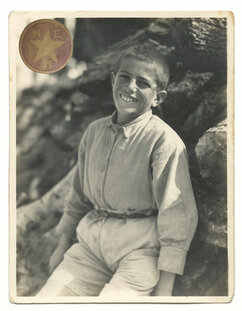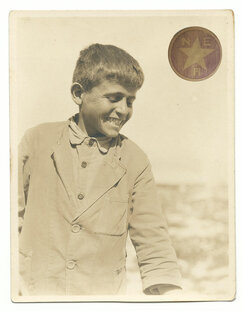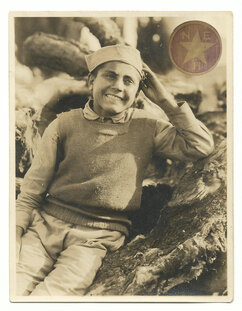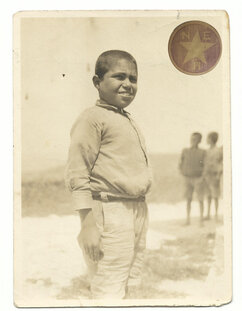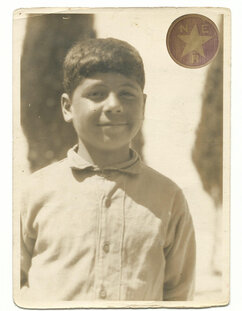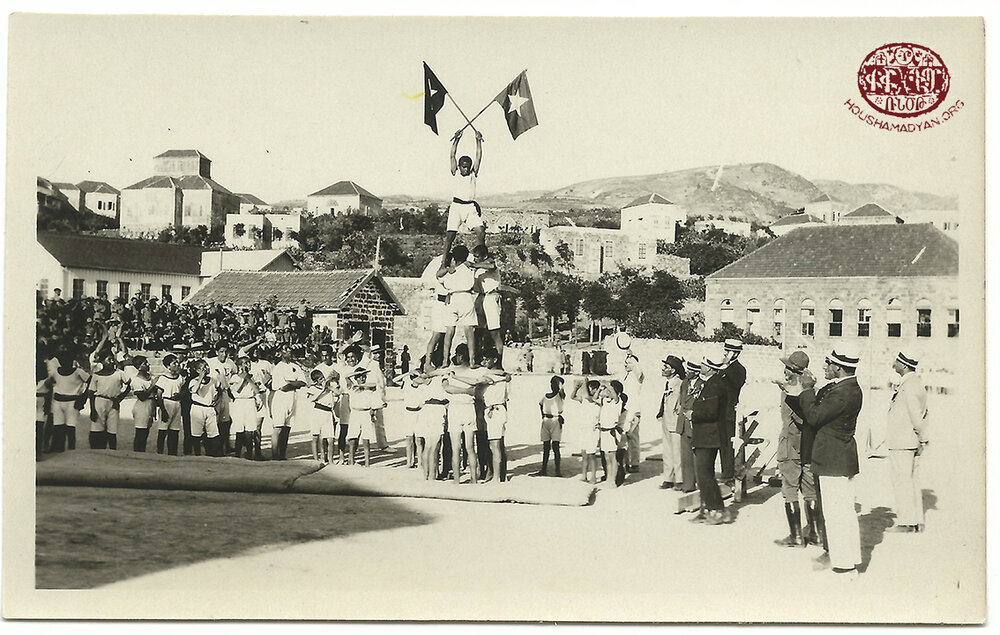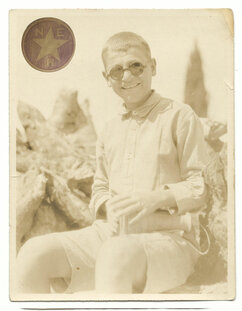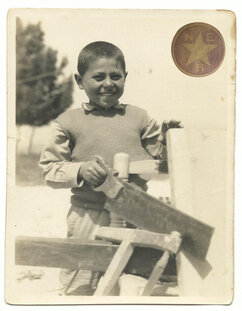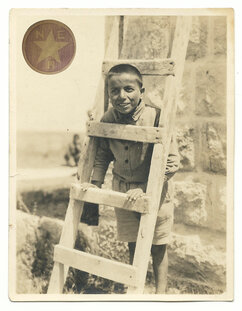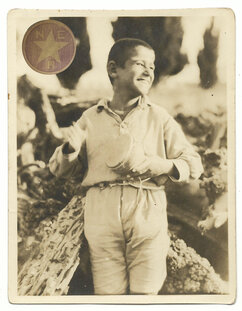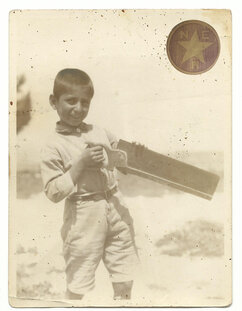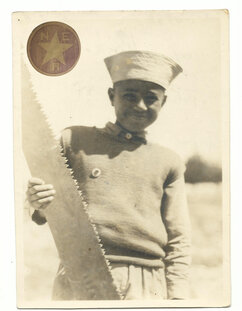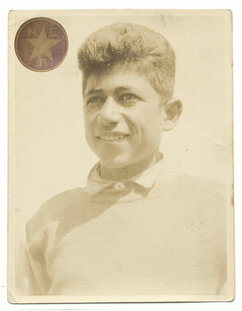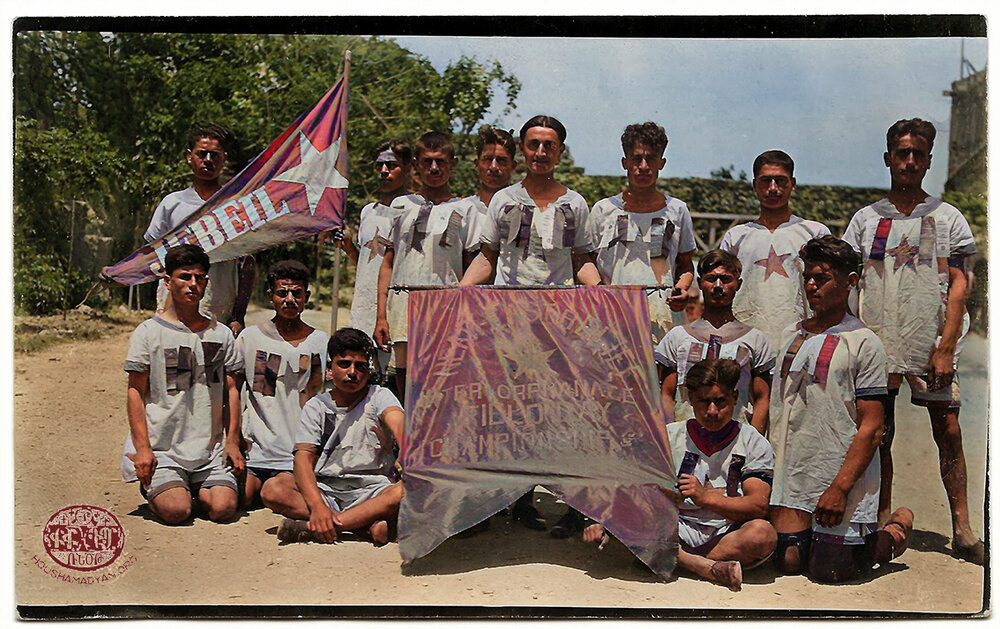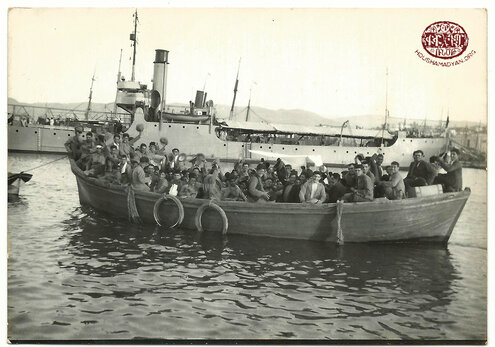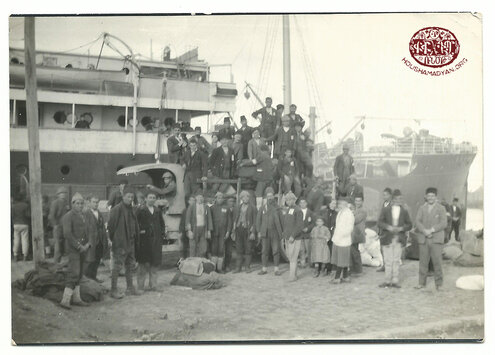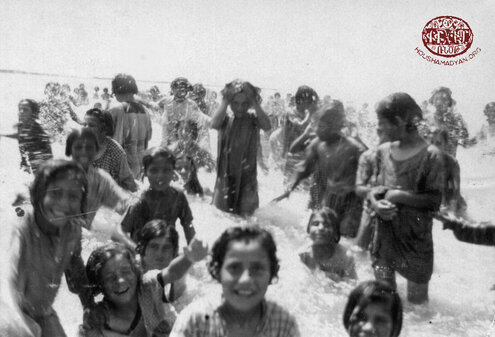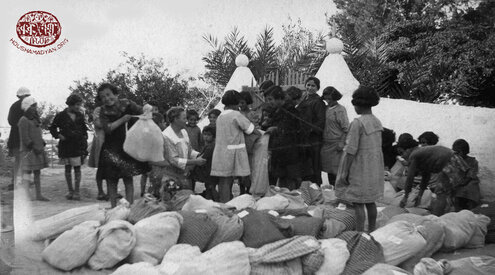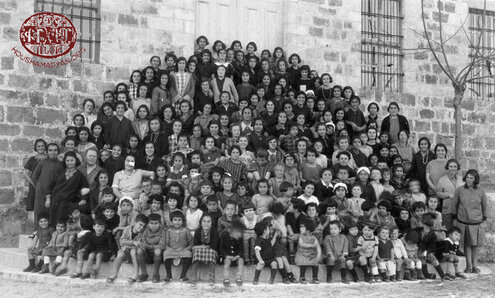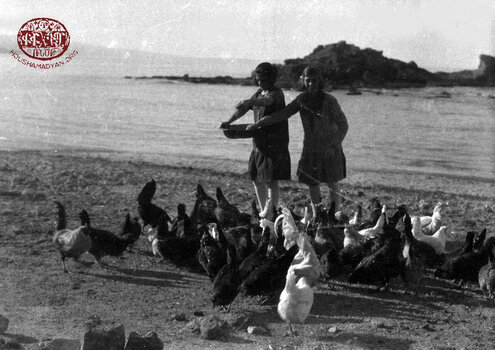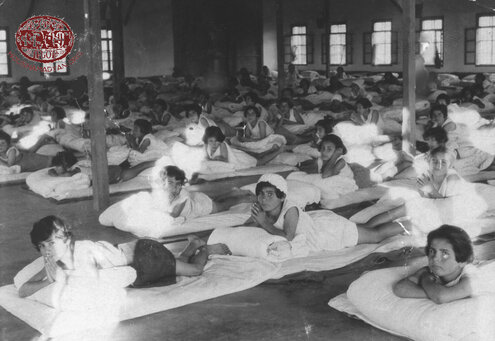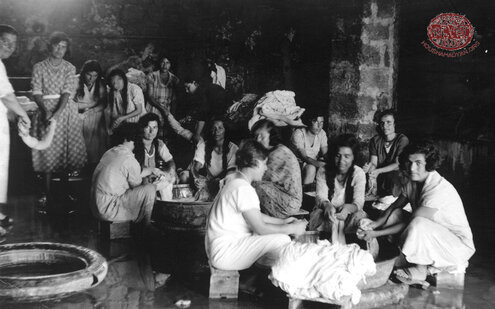Jbeil/Byblos Orphanage - Lebanon
The Smiling Orphans
Author: Vahé Tachjian, 31/01/24 (Last modified 31/01/24)- Translator: Simon Beugekian
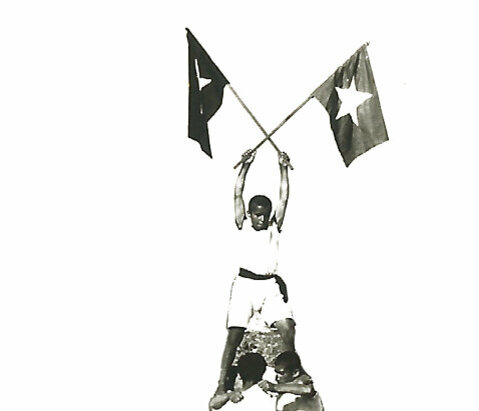
Houshamadyan has obtained access to the photographs of 46 Armenian orphans, which are part of Garo Derounian’s personal photographic collection. Most probably, these orphans were photographed on the grounds of the Near East Relief (NER) orphanage in the Lebanese city of Jbeil. Another possibility is that they were photographed in Ayntab, in 1919-1920, prior to their move to Jbeil. Each photograph measures 7.8 x 10.3 centimeters (3 x 4 inches) in size. Each orphan is photographed smiling. It is likely that the American directors of the orphanage wished to use these photographs for promotional and fundraising purposes.
On the back of each photograph is the full name of the orphan it features, in both Latin and Armenian letters. Evidently, the names were initially written only in English, and the Armenian names were added later. They were probably written by an American employee of the institution who was unaccustomed to Armenian names, as many of them are clearly written incorrectly. On this page, we will provide the orphans’ names in their original forms.
These remarkable photographs take us back to the world of Armenian orphans in Lebanon. In the early 1920s, thousands of these orphans, who had barely survived the horrors of the Genocide, were scattered across numerous orphanages across Lebanon. These institutions cared for the orphans, educated them, taught them trades, and prepared them for adult life.
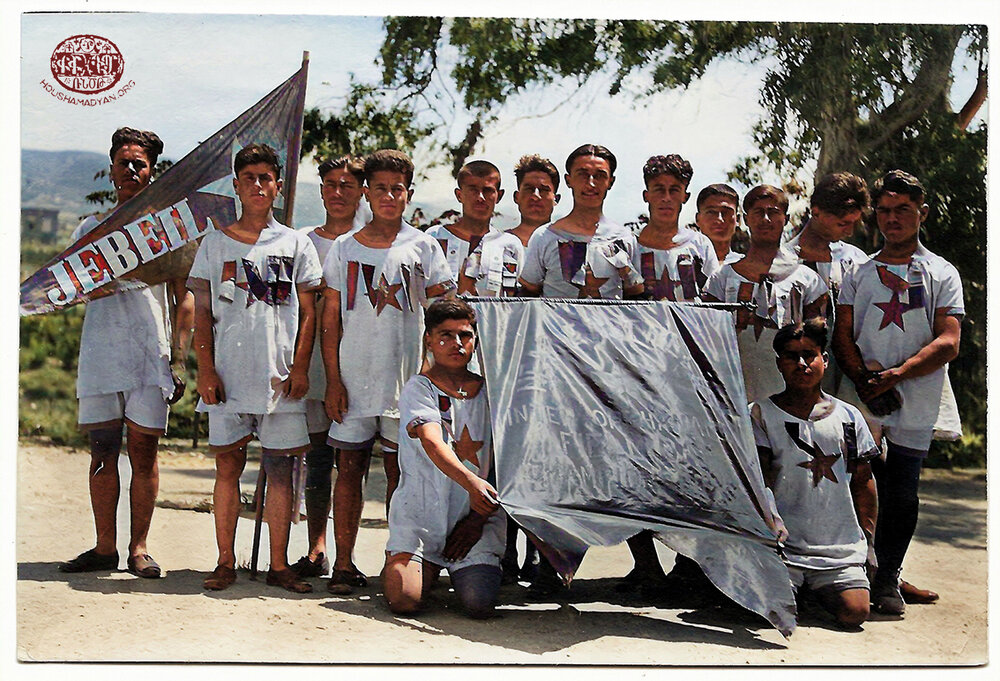
Armenian Orphanages in Lebanon
The boys’ orphanage of Jbeil was founded in 1920, by the NER, to provide shelter to Armenian orphans who had arrived in Lebanon from Ayntab. After leaving Ayntab, the boys had been taken to Aleppo, and from there, to Beirut. When they arrived in Lebanon in June 1920, they were first accommodated in tents in the area called Karantina, near the port of Beirut. Then, in September 1920, they were moved to Jbeil, to a dilapidated property that had previously served as a silk factory, and which would be adapted as an orphanage and host about 1,500 children. The institution was directed by American missionary Ray P. Travis until 1924.
In the 1920s, Lebanon, Greece, and the Soviet Union were the three countries that hosted the most Armenian orphanages who had survived the Genocide. In the early 1920s, in addition to the Jbeil Orphanage, many other Armenian orphanages operated across Lebanon. Below, we provide a list of these institutions, with the names of the entities that operated them in parentheses.
Kelekian-Sisouan, Beirut (AGBU): Founded in 1922. It was located in the Ashrafieh neighborhood of Beirut, and operated until the early 1930s.
Nahr Ibrahim (NER): Founded in spring 1923, to house orphans from Gesaria and Konya. Its director was Stanley Kerr. A malaria epidemic wreaked havoc on the orphanage, killing many of the children. In 1924, the wards of this orphanage were moved to the Jbeil Orphanage.
Ghazir (NER): In 1919, Americans founded an orphanage in this town, for Lebanese children, who were transferred to Saida in 1922. Afterwards, the institution was entrusted to Jakob Kunzler, a Swiss, under whose leadership it accommodated 1,500 Armenian children from Ayntab, operating as a girls’ orphanage. The institution had a rug-weaving workshop. In 1925, a school for the blind was also opened there.
Bzommar, then Bourj Hammoud (Armenian Catholic Church): Approximately 200 children were housed in the Armenian Catholic Monastery of Bzommar. In 1923, they were transferred to Beirut, then Bourj Hammoud, where they were housed in the Saint Gregoire Orphanage. This institution, founded by Father Boghos Aris, focused on agricultural education.
Maameltein (NER): Founded in 1922. This institution, which exclusively accommodated boys, operated for only one year. In 1923, a clinic was opened at the same site.
Jounieh (Vorpakhnam): Founded in 1920, it housed orphans of both sexes who had arrived from Ayntab. The institution operated until 1928.
Jounieh (NER): This orphanage housed 470 female orphans from Konya and Gesaria. It closed in 1925, and some of the girls were transferred to Ghazir and Saida.
Zouk Mikael (NER): This girls’ orphanage was founded in 1922 and housed 350 orphans. Its director of Maria Jakobson, the Danish missionary. In 1923, due to a water crisis, the institution was closed, and the orphans were transferred to the orphanage of Saida.
Antilias (NER): Founded in 1922, this institution housed about 1,250 orphans. It was administered by the Australian chapter of the NER. Later, a trade school would operate at this site. In the late 1920s, the property that housed this orphanage became the seat of the Catholicosate of the Holy See of Cilicia.
Beirut (NER): Beginning in 1922, this American institution had its own embroidery school for female orphans, located right on the shore. Due to the large number of pupils, a second similar institution was opened in 1923, in St. James (Beirut). These two institutions were closed in 1925.
Saida (NER): Founded in 1918 and reserved for Lebanese orphans. Later, about a thousand Armenian orphans were housed here. The orphanage was known as The Birds’ Nest. Its director was Maria Jakobson, who would later become the director of the Jbeil Orphanage.
Hammana, Sur (Tyre), and Damour (NER): These institutions had a short lifespan. When they were shuttered, the orphans in their care were transferred to other American-run orphanages across Lebanon.
Shemlan (Friends of Armenia): This British institution housed 100-150 Armenian orphans who had arrived from Ayntab.
Ain Anoub (Friends of Armenia): This British orphanage, located near Shemlan, cared for Armenian orphans.
Broummana (Friends of Armenia): An orphanage founded by Friends of Armenia, a British organization, in 1922. It cared for Armenian orphans.
Aley and Baabda (Bezanson Sisters): In Aley, this French institution housed 300 Armenian boys, while the orphanage in Baabda housed about 100 girls.
Abey (Capuchin Order): A French orphanage, in Aley, that cared for Armenian orphans.
Saida and Baskinta (Sisters of Saint Joseph): This French orphanage housed about 40 female orphans in Saida and cared for another 20 female orphans in Baskinta.
It must be noted that during the years of the Genocide, Armenian orphans were also housed in the Turkish orphanage of Antoura.
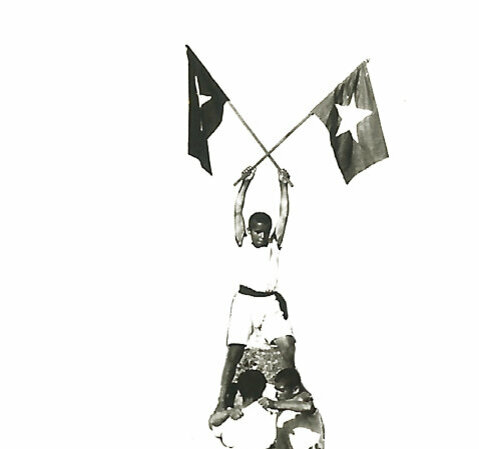
The Education of Orphans and the Orphanage of Jbeil
From the perspective of the Diasporan-Armenian leadership, the upbringing and education of Armenian orphans was not merely a humanitarian or sociological/psychological imperative. Numerous articles that appeared in the contemporary Armenian press clearly show that Diasporan Armenian communities saw the issue of the orphans as a matter of national survival. These orphans, scattered across various institutions, were viewed as national treasures and as guarantors of the future existence of Diasporan communities and Armenia. Thus, orphanages had to be transformed into crucibles that forged the new Armenian of the future – free of the oppressions of the past, and aware of his identity and the importance of preserving it. In this post-Genocide era of national rebirth, the orphans became a symbol of national revival. Their protection, care, and education in the national spirit were absolute priorities.
In a letter he wrote from Paris in 1924 and addressed to the Armenian orphans of Jbeil, Avedis Aharonian described them as “the beautiful seedlings of our new Eden; the rich buds of our ruined forest; the first gleams of our new dawn.” [1] Aharonian, like many others, was convinced that with proper education and guidance, the Armenian orphan would become the responsible Armenian of the future and the vanguard of a national renaissance.
In the first half of the 1920s, the Jbeil Orphanage was also an important Armenian educational center. The faculty consisted of young and talented intellectuals, truly devoted to the mission of educating their pupils. Among them were Setrag Zaven, Copernic Mansourian, Haig Balian, Gosdan Bandigian, Sdepan Dardouni, Mihran Baligian, Haiganoush Keshishian, Garabed Kuvurian, and others.
The primary language of instruction at the institution was Armenian, but the orphans also learned Arabic, English, and French. Patriotic and revolutionary songs were often heard on campus, and the symbolic and inspiring figures of Armenian history and the heroes of the fedayee movement were idolized by the orphans. Prominent contemporary Armenian figures regularly visited the orphanage. In fact, many Armenian luminaries treated the orphanage as a pilgrimage site. They would meet with the orphans, deliver lectures, and try to raise the children’s spirits. Visitors included Catholicos Sahag, Yervant Odian, Nigol Aghpalian, Vahan Kurkdjian, Vahan Tekeyan, Khosrov Tutundjian, and Arshag Hovhannisian.
The orphanage had a library, which boasted a rich collection of Armenian books. It also had an athletic and literary club, a theatrical troupe, a marching band, and sports teams. The orphans published their own official periodical.
The Closure (1925) and Reopening (1928) of the Boys’ Orphanage in Jbeil
In the post-Genocide era, the Diasporan-Armenian leadership was determined to provide Armenian orphans with an education strongly rooted in patriotism and the national spirit. This conflicted with the views of the directors and administration of the American and French orphanages that cared for the orphans, who believed that the institutions’ primary objective was to care for the orphans, provide them with religious instruction, teach them Armenian language and culture, and teach them crafts. They did not see their wards as future Armenian soldiers or as warriors who would fight in the name of Armenian culture and identity. For this reason, Armenian political parties were often prohibited from operating or campaigning within the orphanages.
This simmering conflict unfortunately led to the demise of the Jbeil Orphanage. Some of the institution’s teachers, who were members of the Armenian Revolutionary Federation (ARF), influenced the views of many of their pupils. These orphans, in their turn, began expressing their opposition to the educational policies adopted by the orphanage administration, with the support of the above-mentioned teachers. The tension even led to physical clashes, which received significant coverage in the contemporary Lebanese-Armenian press.
Faced with these challenges, in 1925, the NER board of Lebanon decided to close the Jbeil Orphanage. The orphans were transferred to other orphanages in Saida, Antilias, and Nazareth (Palestine). Previously, in 1924, and based on the stipulations of an agreement between the French government and the NER, 400 orphans from the Jbeil Orphanage had been sent to France, to work in the agriculture sector.
In 1928, the Jbeil Orphanage entered a new period in its history, when the Birds’ Nest orphanage, originally located in Saida, relocated to Jbeil and moved into its premises. Most of the newly arrived orphans were girls. The Jbeil campus was purchased by the Danish mission Kvindelige Missions Arbejdere, and missionary Maria Jacobsson served as the orphanage director.
[1] “From B. Aharonian to Armenian Orphans,” Doun Student Monthly, year 2, number 2, May 1924, Jbeil, Lebanon, American Orphanage.
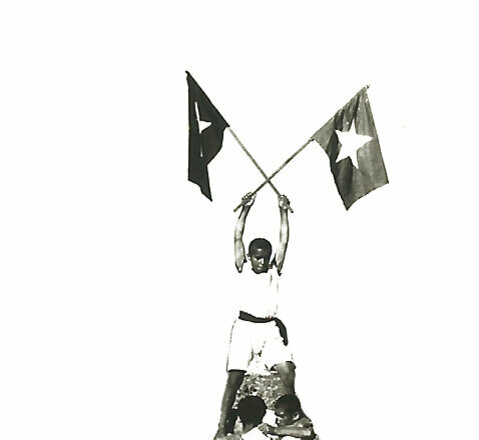
Main Sources
- Roy Travis’s Papers, Yates County History Center.
- Houshamadyan Jbeili Amerigian Vorpanotsi, 1920-1925 [Memory Book of the American Orphanage of Jbeil, 1920-1925], Hamazkayin Printing House, Beirut, 1969.
- Ayntab - Missionaries: Ray Travis and his Armenian Legacy (Houshamadyan website)
- Doun Student Monthly, Jbeil, Lebanon, American Orphanage, 1922-1925.
